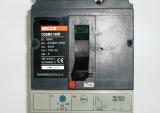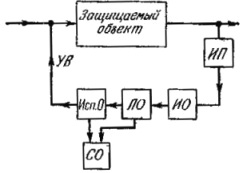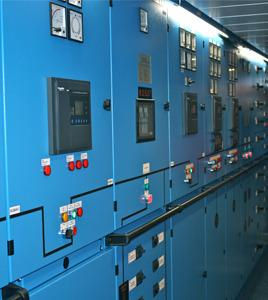General principles of construction of protection of electrical equipment and electrical networks
 The functional scheme of the protection contains the following main bodies:
The functional scheme of the protection contains the following main bodies:
Measuring body of the EUT, continuous monitoring of the state of the protected object and determining the conditions of operation (or non-operation) in accordance with the values of the parameters of the electrical signals received at its input from the measuring transducers of the MT.
LO logic body that generates a logic signal when certain conditions are met.
Executive body Isp.O, which forms, on the basis of the signal of the logical body, the control action of the SW on the switch of the protected object.
In addition, the protection circuit provides a CO signaling device that generates logic signals for the protection operation.

Functional scheme of protection as an automatic control device
Defenses are divided into primary and backup.
Basic is called protection designed to work with all or part of the types of short circuit (short circuit) within the entire protective element with a time shorter than that of other installed protections.
Reserve is the protection intended for operation instead of the main protection of an element in case of failure or decommissioning, as well as instead of protection of neighboring elements in case of their failure or failures of switches of neighboring elements.
In accordance with methods to ensure selectivity in external short circuits. two groups of protection are distinguished: with absolute selectivity and with relative selectivity.
They have relative selectivity protection to which, according to the principle of operation, backup functions can be assigned when they are short. on adjacent elements. That being said, such defenses usually have to be done with time delays.
Protection has absolute selectivity, the selectivity of which at external k, s is provided by their principle of operation, that is, the protection can be triggered only in the event of a short circuit. on the protected element. Therefore, absolute selectivity protections are performed without time delay.
Short circuits in the power system, as a rule, are accompanied by an increase in current. Therefore, the first in power systems appeared overcurrent protections, acting in cases when the current in the protected element exceeds the specified value. These protections are provided by fuses and relays.
Overcurrent protections can, in addition to the full phase currents, also use the reverse and zero sequence current components, which are practically absent in normal mode.
If we compare the effective value of the current (or its symmetrical components) with the specified values, then the protection will have relative selectivity. If we compare the complexes of currents at the ends of the protected element, then the specified protection is called differential current. This principle allows protection to be carried out with absolute selectivity.
Undervoltage relays are also used as measuring devices that trip when the value of the influencing variable becomes less than a given one.
Voltage protectors can also register faults from the appearance of reverse and zero sequence voltage components. In these cases, the measuring elements are implemented on the basis of overvoltage relays.
In a number of cases it is not possible to defend based on the simple principles outlined. Therefore, the distance principle applies, which provides for the joint use of the current and voltage of the protected object in such a way that in short. at the border of the protected zone, a signal proportional to the resistance of the short-circuit loop is generated in the measuring protective body (resistance relay).
Based on the principles discussed, protection can be performed with relative selectivity.
When applying protections with relative selectivity for the elements of the power supply system receiving power from two or more power sources, in order to ensure their selectivity, it becomes necessary to determine the direction of power shortage. and thus ensure their operation under the condition of a certain direction of this power (for example, from tires to line). In these cases, the considered current and distance protections are directional.
The ability to determine the direction of supply is provided by the use of special devices for directing power (as a rule, in overcurrent protection) or by giving directionality to the measuring device (directional resistance relays in distance protections).

